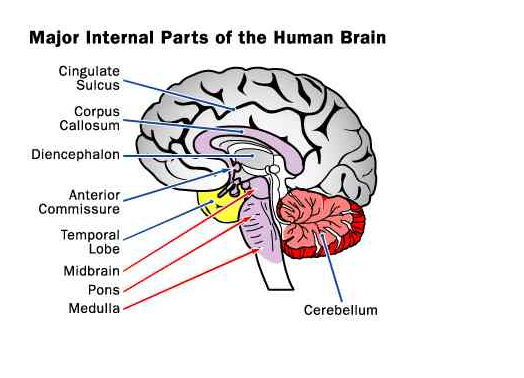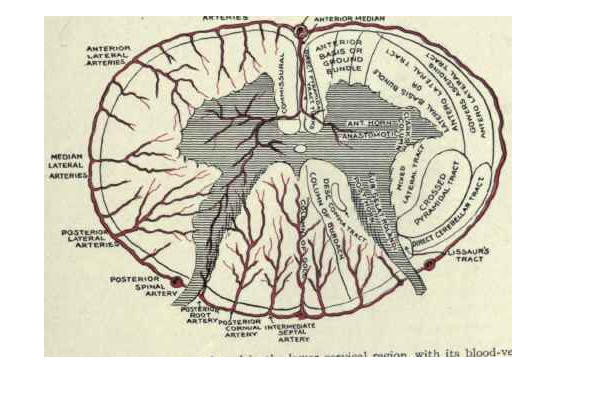Back to: BIOLOGY SS3
Welcome to class!
In today’s class, we will be talking about nervous co-ordination: CNS component, structure and functions of the brain and spinal cord. Enjoy the class!
Nervous Coordination

CONTENT
- The nervous system
- The central nervous system.
- The brain (components, descriptions and functions)
- Structure and functions of the spinal cord
The nervous system
The nervous and hormonal systems co-ordinate various biological activities in the body of multicellular animals, the basic structural unit of the nervous system is the nerve cell called a neurone. It consists of a dense, cell body and protoplasmic processes called nerve fibres. A bundle of the long nerve fibre is called a nerve. The main mechanism of information transfer is electric impulses known as nerve impulses along the nerve fibres.
All the nervous systems in complex animals have the following:
- The central processing region (the brain)
- The nerves bringing impulses from receptors to the brain.
- Nerves carrying information from the brain to the effectors.
Sensory receptors detect stimuli from the external and internal environment and so act as information collectors. They are often found in the sense organs. Effectors include muscles and glands that go into action on receiving nerve impulses from the brain. Such actions include muscular contraction, enzymes production, hormone secretion etc.
The nervous system is divided into the central and the peripheral nervous systems
The central nervous system(CNS)
The CNS consists of the spinal cord and the brain which are enclosed protectively within the vertebral column and the skull respectively. The CNS, in coordinating biological activities, receives a constant input of impulses which keep it informed of changes in the animal’s internal and external environment.
Impulses to the CNS from receptors are transmitted along sensory nerves and are therefore known as sensory impulses. Those impulses from the CNS to the effectors are known as motor impulses since they are transmitted along motor nerves.
The brain:
An average-sized brain for an adult weight is 1.2 – 1.4kg. the brain consists of thousands of neurones enclosed in the skull and covered by three-layered membranes i. e. meninges (outer dura, middle arachnoid and inner pia mater). The ventricles between layers of the meninges are filled with cerebrospinal fluid. The brain consumes about 25 percent of the body’s oxygen supply. The brain has three regions, the forebrain, middle brain and hindbrain.
Forebrain
This is the most predominant part of the brain, connected with intelligence and speech. It comprises of three major parts; cerebrum, thalamus and hypothalamus.
Cerebrum:
This occurs in two halves, connected together through fibres called the corpus callosum. The halves are called the cerebral hemispheres. Each hemisphere is made up of four indistinct lobes which are frontal, parietal, temporal and occipital. The most active region of the cerebrum is the outer layer called cerebral cortex which is made up of grey matter. The cortex is highly convoluted for increased surface area. The more convoluted the cortex, the more the cerebral capacity. The cerebrum carries out its functions with each area specializing in a particular activity. Cerebrum
- control all voluntary actions.
- it receives sensory information, processes it and sends the response through the motor neurones to the effectors.
- it is the seat of consciousness, memory, learning, intelligence, reasoning and judgment
Thalamus:
This is oval in shape and acts as a relaying centre. Thalami
- receives sensory information from lower parts of the brain and the spinal cord, integrate it and pass it to relevant regions of the cerebral cortex.
- it helps to experience the sensation.
Hypothalamus:
This is the region below the thalamus. It
- controls the pituitary gland
- it acts mainly in the body homeostasis e.g. controls body temperature, water balance and blood pressure
- it also controls emotion e.g. anger, fright, joy etc.
- it controls appetite and speech.
Evaluation
- Outline the components of the nervous system
- State two functions of the cerebrum

Midbrain
The midbrain connects the forebrain and the hindbrain. it consists of optic lobes and the pineal body.
- controls reflexes connected with sight and hearing
- it is a link between the fore and the hindbrain.
Hindbrain
The hindbrain consists of three parts; cerebellum, pons Varolii and medulla oblongata.
Cerebellum:
It has three parts; a central part connected to two lateral parts through the pons Varolii. The two lateral parts are called cerebellar hemispheres. The cerebellum
- controls the body posture
- coordinates muscular movement to maintain the body balance.
Medulla oblongata:
This is the posterior end of the brain which continues into the spinal cord. Unlike the cerebellum and cerebrum, the medulla oblongata has an inner grey matter and at the outer white matter. It
- controls all involuntary actions e. g. yawning, blinking of the eye
- controls the involuntary movement of the body especially those involved in respiration, heartbeat and digestion.
- Regulate the blood pressure by controlling dilation and constriction of blood vessels.
Evaluation
State two functions each of a. cerebrum b. hypothalamus c. cerebellum
The spinal cord (functions and structure)
The spinal cord consists of thousands of neurones which run down the length of the neural canal at the back of vertebrates. The spinal cord is enveloped within a three-layered membrane called meninges. A narrow canal, the spinal canal runs down the centre of the cord. The canal is filled with a fluid called cerebrospinal fluid.
The transverse section of the spinal cord shows a greyish region called the grey matter surrounded by a lighter region called the white matter. The grey matter is composed, practically of all the cell bodies of the neurones in the spinal cord. Since the cell bodies are dense and granular, they give this region its typical greyish appearance. The white matter consists of the nerve fibres of these cell bodies. Some of these fibres run along the spinal cord to the brain connecting both together. Other fibres leave the spinal cord to form the spinal nerves.

The spinal cord functions in:
- coordinating simple reflex actions such as knee jerk and automatic reflexes such as sweating.
- It sends impulses to the brain and responses from the brain to the effectors
Evaluation
Describe the structure and functions of the spinal cord.
General evaluation
- Differentiate between forebrain and hindbrain
- What are meninges
- State three functions of cerebrospinal fluid
- Describe the brain
- Differentiate between the dorsal root and ventral root
Reading assignment
College Biology, chapter 10, page 207 – 211
Weekend assignment
- The forebrain is made up of the following except (a) cerebellum (b) thalamus (c) hypothalamus (d) cerebrum
- The part of the brain that controls the body homeostatic is the (a) thalamus (b) medulla oblongata (c) hypothalamus (d) cerebrum
- The human brain consumes ____ of the body oxygen supply (a) 10% (b) 25% (c)50% (d) 75%
- The shock absorber fluid filling up the spinal canal and the brain ventricle is (a) intercellular fluid (b) cerebrospinal fluid (c) vertebraterial fluid (d) amniotic fluid
- The band of fibres connecting the two halves of the cerebrum together is called (a) median fissure (b) pons Varolii (c) corpus callosum (d) thalamus
Theory
- Explain briefly the dorsal root ganglion
- Differentiate between the cerebrum and medulla oblongata
In our next class, we will be talking about the Peripheral Nervous System and the Neurons. We hope you enjoyed the class.
Should you have any further question, feel free to ask in the comment section below and trust us to respond as soon as possible.

This had been helping
nice👍👍👍👍👍😍